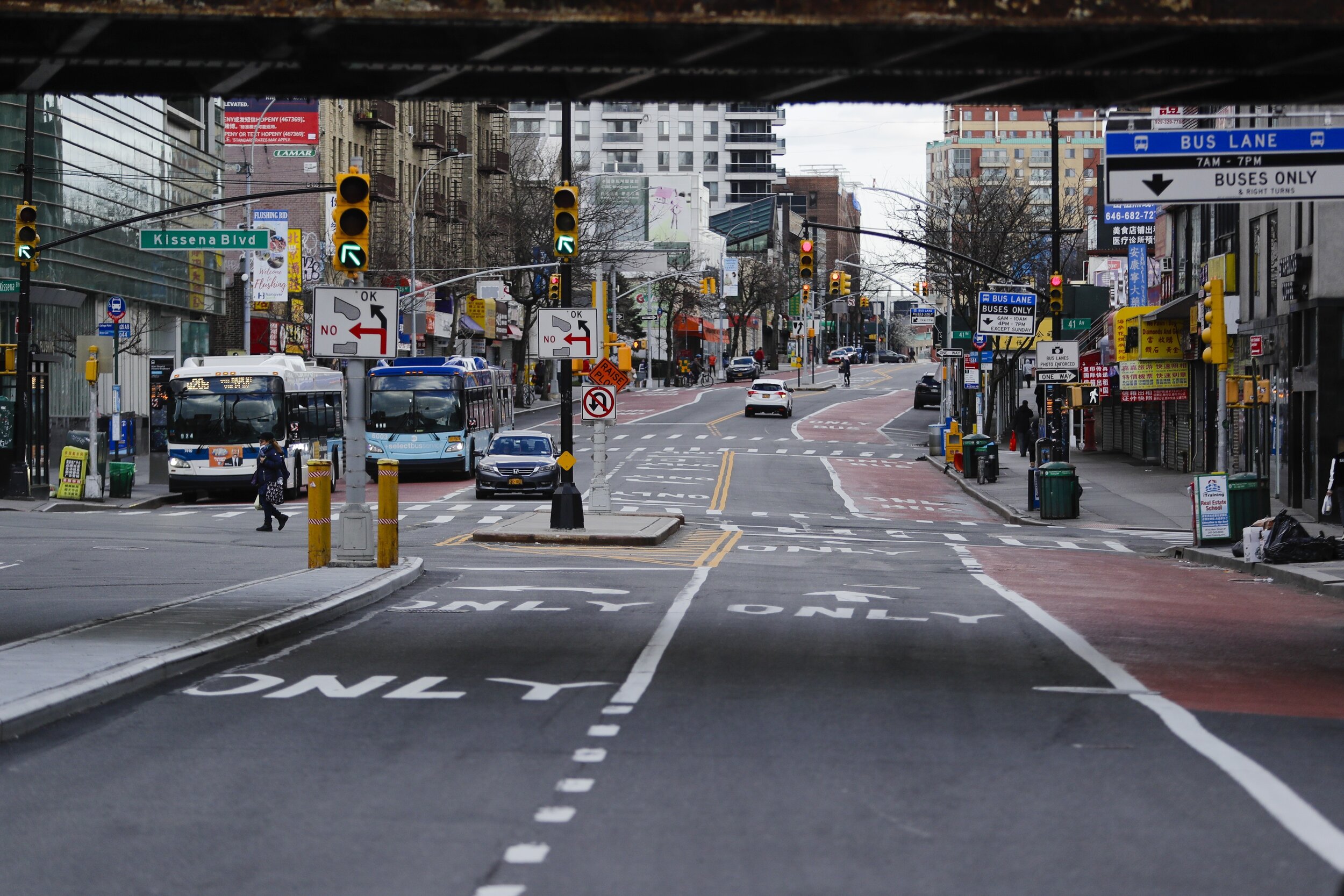Main Street busway would boost business in Flushing, advocates say
/A plan to limit cars and facilitate buses along a congested stretch of Main Street in Flushing has encountered mixed responses from the community and business owners. Photo via DOT
By David Brand
A plan to limit cars and facilitate bus travel along a busy stretch of Main Street in Flushing has received significant support in the community, despite pushback from some local business leaders, say project advocates.
Under the Main Street busway plan, announced by Mayor Bill de Blasio in June, the Department of Transportation would prevent cars from traveling north and south along the entire 0.3-mile strip between Northern Boulevard and Sanford Avenue. Drivers that enter that section of roadway would be forced to make the next available turn. The southbound lanes currently serve as a busway, forcing car drivers to turn east or west within a block of entering Main Street.
After a group of landlords, representatives for local elected officials and one city council candidate held a press conference to criticize the busway plan, project advocates fired back, citing a 2015 DOT survey that found that 83 percent of people arrive in Downtown Flushing by foot, bus, subway or other mode of transportation. At least 27 percent of visitors ride the bus, the survey found.
A 2016 Downtown Flushing needs assessment conducted by the city, in coordination with the Greater Flushing Chamber of Commerce and Flushing Transit Hub Business Improvement District, found that 39 percent of people travel into all parts of the neighborhood by car.
“We feel the top priority is to make transportation access safer and easier for as many people as possible,” said John Choe, executive director of the Greater Flushing Chamber of Commerce. “That means making buses more efficient or more frequent.”
The DOT estimates that about 150,000 people travel Main Street by bus each day. Overall, 20 MTA bus routes serve Downtown Flushing.
The people who drive into Downtown Flushing “tend to be wealthier individuals coming from the suburbs,” said Choe, who created a petition supporting the busway so far signed by 190 business owners and residents.
“Why do their rights override the vast majority of New Yorkers who need to get to work, get to school?” he added.
Flushing’s Main Street is typically jammed with cars, but was relatively empty during the early days of the COVID-19 crisis. AP Photo/Frank Franklin II
Opponents of New York City busways, particularly a first-of-its-kind route along 14th Street in Manhattan, say limiting car access on specific roadways can reduce the number of people visiting local businesses — a questionable claim where anecdotal evidence can be massaged to mesh with preconceptions.
Choe said the Main Street busway would actually facilitate local business by enabling more people to access the area. Few people manage to find a parking spot along the congested stretch of Main Street, he said.
“For the long-term sustainability of Flushing, we need to be open to these types of innovative policies that encourage people to use public transit, to walk and to bicycle into Downtown Flushing rather than use private cars, which take up space and contribute to the enormous traffic congestion,” he said, noting that it can take 15 minutes for Q20 and Q44 buses to travel three blocks amid the gridlock.
“People are coming up with all types of reasons not to go forward with the busway,” he said. “It’s not for valid reasons but because they oppose efforts to infringe on the rights of car owners.”
Transportation Alternatives Queens organizer Juan Restrepo said the busway will be part of a “business revitalization plan” for local companies devastated by the impact of COVID-19.
“We need to use every tool we have to bring these businesses back, whether it’s making Downtown Flushing more accessible to buses, walking or bicycles. We need all of it,” he said.
At the press conference Friday, officials from the Flushing BID said they had heard from 200 business owners who opposed the plan because they thought limiting car traffic would reduce the number of customers visiting their shops.
“Many businesses fear that the busway will make travel to Flushing more inconvenient for customers and drive down clientele,” Flushing BID said in a statement. “Many are also worried that as the traffic is diverted away from Main Street, the neighboring streets will become even more congested.”
The DOT did not sufficiently engage the community before announcing the plan to create the busway, they added.
Image via dot powerpoint presentation, june 2020
Choe also said the DOT should conduct better outreach, particularly for non-English speaking business owners and residents.
“Those are very valid concerns, but I don’t believe we should postpone or reschedule,” Choe said. “Calls for further studies ring really hollow considering the fact that we’ve already had a busway for half of Main Street.”
The DOT said the agency had worked with the community for months before rolling out the busway plan in June.
“We do not believe in surprising New Yorkers with new projects that affect them — especially not projects like the Main Street busway, which will transform commutes for students, workers, and families in downtown Flushing,” a DOT spokesperson said.
The spokesperson said the DOT created a Community Advisory Board to gain the perspective of business groups, like the Flushing BID and the Greater Flushing Chamber of Commerce, as well as local elected officials and a range of small business owners and residents.
“We are planning more outreach, and we’re preparing Chinese-language advertising for CAB members to distribute to the community in the coming days,” the DOT spokesperson said. Queens deserves faster buses, and we look forward to continuing to make our case for this essential new project.”






